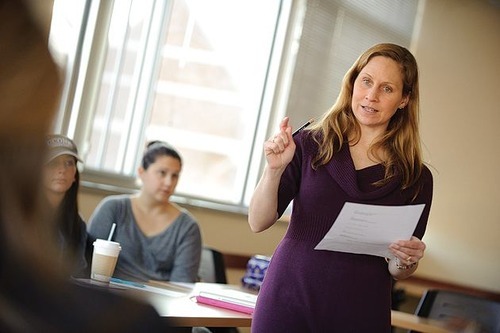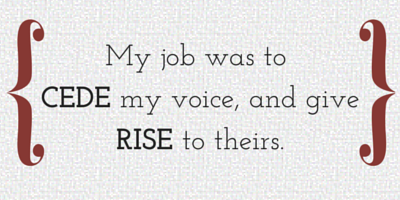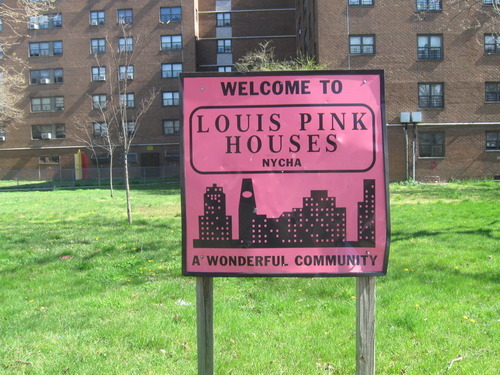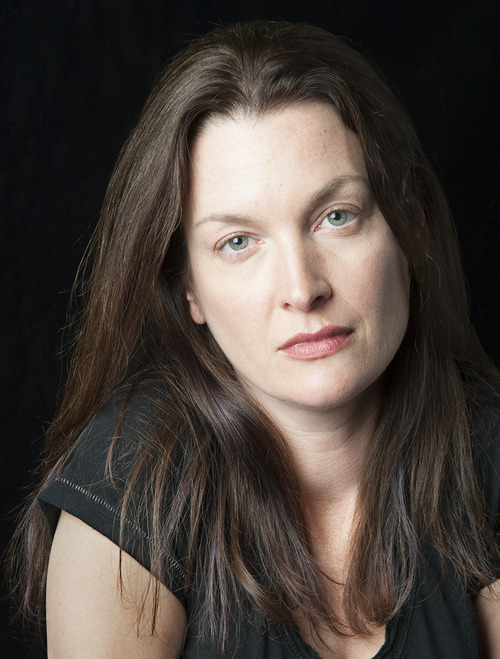Month: March 2015
-
Voting Is Now Open for the 8th Annual Children's Choice Book Awards!
Launched in 2008 by Every Child a Reader and the Children’s Book Council, the Children’s Choice Book Awards (CCBA) is the only national book awards program where the winning titles are selected by kids …
-
Harry Potter Alliance Follows Up Chocolate Win With International Book Drive
Coming off of a landmark victory in successfully compelling Warner Bros. to make all their Harry Potter chocolates UTZ. or Fair Trade, the Harry Potter Alliance (HPA) is running another …
-
First Book and Unbound Concepts Team Up to Help Educators in Low-Income Communities Discover Best Books for the Kids They Serve
BALTIMORE, MD – Baltimore-based Unbound Concepts and the nonprofit First Book today announced a partnership that will help match students from low-income families with high-quality books best-suited for their reading abilities and …
-
Literary Apps for Young Readers
While Bird sees a current decline in the production of children’s book apps, she has come across several “hits” worth sharing: The Barefoot Books World Atlas by Nick Crane Don’t Let …
-
Penguin Random House Launches Site for Parents of Young Readers
New York, NY — Today, Brightly, a new online resource that encourages parents to raise lifelong readers, launches as a Penguin Random House initiative. Brightly aims to provide moms and dads …
-
National Ambassador Kate DiCamillo's Advice to Writers
Now an established author, DiCamillo encourages aspiring writers to stop talking and start writing: People come up to me and (ask advice) and the thing that resonates with me about …
-
Remembering Author Terry Pratchett
Pratchett was the author of over 70 books, including such books for young readers as Dodger and Dragons at Crumbling Castle. He also collaborated with close friend Neil Gaiman on Good Omens. Pratchett was knighted for “services to literature” in …
-
The Alan Review | Winter 2015
Contributed to CBC Diversity by Wendy J. Glenn

In the Fall 2014 issue of The ALAN Review, the peer-reviewed journal of the Assembly on Literature for Adolescents of NCTE (ALAN), contributors were invited to share their experiences, challenges, hesitations, and successes in using or promoting young adult literature that features characters and/or authors of color.
Statistics suggest that, by 2019, approximately 49% of students enrolled in U.S. public schools will be Latina/o, Black, Asian/Pacific Island, or American Indian (Hussar & Bailey, 2011). However, the field has been increasingly criticized for not reflecting these demographics in the literature published for young adult readers. For readers of color, this can result in a sense of disconnect between lived reality and what is described on the page. For readers from the dominant culture, this can result in a limited perception of reality and affirmation of a singular way of knowing and doing and being. For all readers, exposure to a variety of ethnically unfamiliar literature can encourage critical reading of text and world, recognition of the limitations of depending upon mainstream depictions of people and their experiences, and the building of background knowledge and expansion of worldview.
Consider the experiences of the late Walter Dean Myers: “All the authors I studied, all the historical figures, with the exception of George Washington Carver, and all those figures I looked upon as having importance were white men. I didn’t mind that they were men, or even white men. What I did mind was that being white seemed to play so important a part in the assigning of values” (Bad Boy: A Memoir). And ponder Jacqueline Woodson’s words, “Someday somebody’s going to come along and knock this old fence down” (The Other Side).
The current issue of The ALAN Review addresses what educators and librarians have done (or might do) to give that fence a nudge.


Wendy J. Glenn is Associate Professor in the Neag School of Education where she teaches courses in the theories and methods of teaching literature, writing, and language. She is the former President of the Assembly on Literature for Adolescents of the National Council of Teachers of English (ALAN) and current Senior Editor of the organization’s peer-review journal, The ALAN Review.
-
National Math Festival Announces Expanded Schedule of More Than 40 Free Events
FOR IMMEDIATE RELEASE — March 12, 2015 Media Contact: Carrie Fox, carrie [at] cfoxcommunications [dot] com (301) 585-5034 National Math Festival Announces Expanded Schedule of MoreThan 40 Free Events From Antarctic …
-
Eric Carle, Iconic Children's Book Author and Illustrator, to Publish New Picture Book with Penguin Young Readers
New York, NY – Eric Carle, the legendary author and illustrator of children’s classics The Very Hungry Caterpillar and The Very Busy Spider, will publish a new picture book with Philomel, an imprint of Penguin Young …
-
National Ambassador Kate DiCamillo Visits Bainbridge Island, WA
At the event, DiCamillo read from her Newbery-Honor winning book Because of Winn-Dixie and shared her passion for books with local students. She also took time to answer questions from …
-
Ellen Hopkins, Author of Nine New York Times Bestsellers, Signs Two-Book Deal With Simon & Schuster Children's Publishing
NEW YORK, NY – Margaret K. McElderry Books, an imprint of Simon & Schuster Children’s Publishing announced today that it has signed two new titles with New York Times bestselling author Ellen Hopkins. The …
-
Getting It Right
Contributed to CBC Diversity by Peggy Kern
The first time I met Miracle (not her real name), she arrived in a full suit of armor: a thick mask of makeup, black eyeliner pointed like arrows at the edge of her eyes - a warning, perhaps, to not look at her the wrong way - hair slicked back into a severe ponytail, a jean skirt and flat black leather boots suitable for running away, if need be.
My friend, a detective with the NYPD at the time, had arranged the meeting. Miracle was known to police as a reliable source of information about sex traffickers in Brooklyn. She is also a survivor of child prostitution.

When I decided to write Little Peach, I knew I could not attempt the story without speaking directly with victims. I felt I had no right to type a single word on the page without doing so. Little Peach could not be my sheltered imagining of the issue, but an accurate account guided by the victims themselves. My job was to cede my voice, and give rise to theirs.
The first night we met, Miracle and I spoke for three hours.
She told me about the scouts that lie in wait at bus terminals and outside of group homes, looking for runaways and desperate, injured kids. She told me I could go to Port Authority that very night and I would see men wearing red or blue – signifying their particular gang affiliation – hunting for girls.
She showed me the tattoos she was given by her pimp, including a five-point red star placed strategically behind her ear by a sect of the Bloods that deals in trafficking. The placement is intentional: she could easily be identified as their property with the turn of her head.
She explained to me how traffickers use drugs to hook young girls. She herself was hooked on crack-cocaine by the age of twelve. She told me they target black and Latino runaways because, and I quote, “Somebody’s always lookin’ for the white girl, or she’ll want to go home. And that makes her a risk.”
She talked about her mom, who was a prostitute and addict, and the sexual abuses she endured at the hands of mother’s “customers.”
She taught me the difference between the young girls who are sold online and kept out of sight in hotels, and the older ones who are put out to pasture on the “track” – a term for the largely unpatrolled street corners where women are sold.

She told me about the girls she’s loved like sisters through the years. Some of them were murdered. Some were sold to other pimps. Most simply disappeared into the prison system or the streets.
She could not talk about her foster father, who had abused her so badly she still, all these years later, had no words to describe it.
She cried. So did I. And she said, “No one ever asked me these questions before.”
The second time we met, Miracle arrived in a comfy sweat suit. No makeup, hair down. Soft eyes. Sneakers. She continued to talk. And I listened to every word she said.
My time with Miracle, and with another woman named Jen, who I met on the “track” on Flatlands Avenue in Brooklyn and whose story was unbelievably similar to Miracle’s down to a tattoo on her chest, informed the voices of Michelle, Kat and Baby – not just culturally, racially, and socio-economically – but emotionally. There are moments in the book when Michelle can barely speak to you. Her sentences are broken. She almost loses her ability to communicate because what’s happening is so intolerable. It’s like she’s whispering, or turning her head away. That is the voice of Miracle, in many ways. And of Jen. And of the other girls I watched in the hotels of Brooklyn, but could not get near.
Miracle also taught me the geography of Little Peach. I depicted her world as best I could, and the world shown to me by my friend with the NYPD. Pink Houses, Coney Island (where Miracle and I would meet), even North Philadelphia, where I spent time working with students years ago – those locations are as real as the girls Peach represents.

Over and over, as I was writing the novel, I would ask myself: Would Miracle agree? Would Jen? If they read this, would they nod their heads and say, Yeah. That’s right, Peg. That’s how it went down.
Research is important, no matter what you’re writing about. But for Little Peach, it meant the difference between my sheltered imagining of what sex trafficking is like – and the actual accounts of victims.
The obvious truth is that no matter how much time I spent in Brooklyn, no matter how many conversations I had with survivors, I will always be a white woman. And I always got to return home to my apartment at the end of the night, where I sleep in safety, where I have food in my refrigerator and where my blond daughter lives in privilege compared to so many other girls in this country.
That I cannot change. And yet, the story matters so much. Peach matters so much. And so, you try. As a writer, as a human, you try – with all your powers and heart and inescapable limitations – to accurately depict the children you are bearing witness to.
You do your best to get it right. And if you missed the mark in moments, you own that, too.
But silence is not an option. Silence – when kids are literally dying – is unacceptable.


Peggy Kern has written two books for the Bluford series. She lives with her daughter in Massachusetts.
-
Bookstores! Enter the Children's Book Week Display Contest and Win an Author Visit!
In celebration of the 96th annual Children’s Book Week (CBW) (May 4-10, 2015), the Children’s Book Council and Every Child a Reader are teaming up with the ABC Children’s Group …
-
Audible to Produce Direct-to-Audiobook Stories
Fantasy writer Philip Pullman is one of many writers (from TV, film, and literature) to participate in the new audio storytelling project: I love this…We are taking part in a …
-
James Patterson and Scholastic Partner to Help Save School Libraries
New York, NY — As part of an ongoing effort to keep books and reading a number one priority in the United States, James Patterson has announced that he will donate …
-
'Rosie Revere, Engineer' to Star in Story Time from Space
STFS was launched in 2011 by former Director of Education at Space Center Houston, Patricia Tribe, in the hopes of inspiring children’s love of literacy and STEM subjects (Science, Technology, Engineering, and Math). Beaty …
-
Possibility of Prequels in the Hunger Games Film Franchise
Francis Lawrence, the director behind three of the four Hunger Games movies, sat for an interview with MTV, and discussed the possibility of continuing with the highly successful franchise. Everybody is …
-
Literacy Expert Phyllis C. Hunter Shares 10 Ways to Encourage Reading at Home and in School
New York, NY — Renowned literacy expert Phyllis C. Hunter has penned a special series of blog posts on edu@scholastic, Scholastic’s education blog, offering educators and families tips to help …
-
Scholastic's Kids & Family Reading Report Reveals Importance of Reading Aloud
NEW YORK, NY – Yesterday was World Read Aloud Day, and there is reason to celebrate because according to the Kids & Family Reading Report™: 5th Edition, conducted by Scholastic and YouGov, …





















